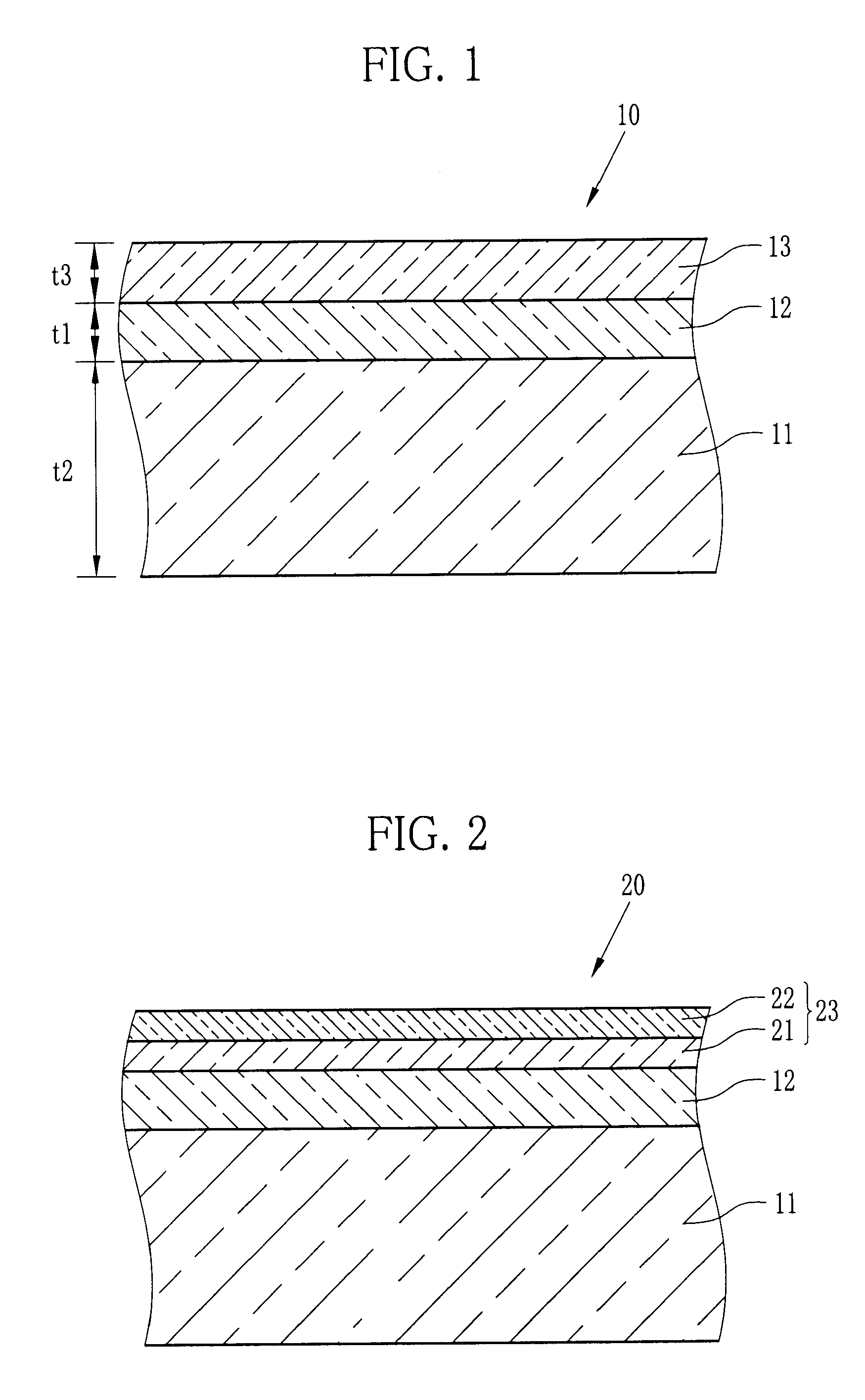Multilayer film and image display device
a display device and film technology, applied in the field of multi-layer film and image display devices, can solve the problems of uneven luminance distribution, rainbow effect, and difficulty in keeping adhesive strength high, and achieve the effects of excellent optical properties, reduced color rainbow effect, and increased adhesive strength
- Summary
- Abstract
- Description
- Claims
- Application Information
AI Technical Summary
Benefits of technology
Problems solved by technology
Method used
Image
Examples
working example 1
[0075] The multilayer film 10, shown in FIG. 1, was produced as a working example 1 by the following procedure. The second layer 13 was composed of only the hard coat layer 21.
[0076] (Base)
[0077] Firstly, polyethylene terephthalate (hereinafter, PET) polycondensed with antimony trioxide catalyst to have intrinsic viscosity of 0.66 was dried out to include a moisture content of 50 ppm or less, and then melted in an extruder at 280-300° C. This molten PET resin was cast from a die onto an electrostatically energized chill roll, and an amorphous film was obtained. This amorphous film was stretched, firstly along the longitudinal direction until it gets 3.3 times as large as the initial length, and then along the width direction until it gets 3.8 times as large as the initial width, so that the base 11 with a 100 μm thickness was obtained. The refractive index of this base 11 was 1.65.
[0078] (First Layer)
[0079] The base 11 was conveyed at a speed of 70 m / min, and a corona discharge ...
working example 2
[0095] A working example 2 was produced by the same manner as the working example 1, except that the 2nd particle water dispersion in the coating liquid A was changed to zirconium oxide water dispersion. This zirconium oxide water dispersion was a zirconium oxide sol (HZ-307W6: Nissan Chemical Industries, Ltd.: 20% solid content aqueous solution), and the amount was 153 pts.mass.
working example 3
[0096] A working example 3 was produced by the same manner as the working example 1, except that the 2nd particle water dispersion in the coating liquid A was changed to indium oxide water dispersion. The indium oxide water dispersion was EP ITO DL-1 (product name: JEMCO Inc.: 20% solid content aqueous solution), and the amount was 115 pts.mass.
PUM
| Property | Measurement | Unit |
|---|---|---|
| Thickness | aaaaa | aaaaa |
| Thickness | aaaaa | aaaaa |
| Length | aaaaa | aaaaa |
Abstract
Description
Claims
Application Information
 Login to View More
Login to View More - Generate Ideas
- Intellectual Property
- Life Sciences
- Materials
- Tech Scout
- Unparalleled Data Quality
- Higher Quality Content
- 60% Fewer Hallucinations
Browse by: Latest US Patents, China's latest patents, Technical Efficacy Thesaurus, Application Domain, Technology Topic, Popular Technical Reports.
© 2025 PatSnap. All rights reserved.Legal|Privacy policy|Modern Slavery Act Transparency Statement|Sitemap|About US| Contact US: help@patsnap.com



